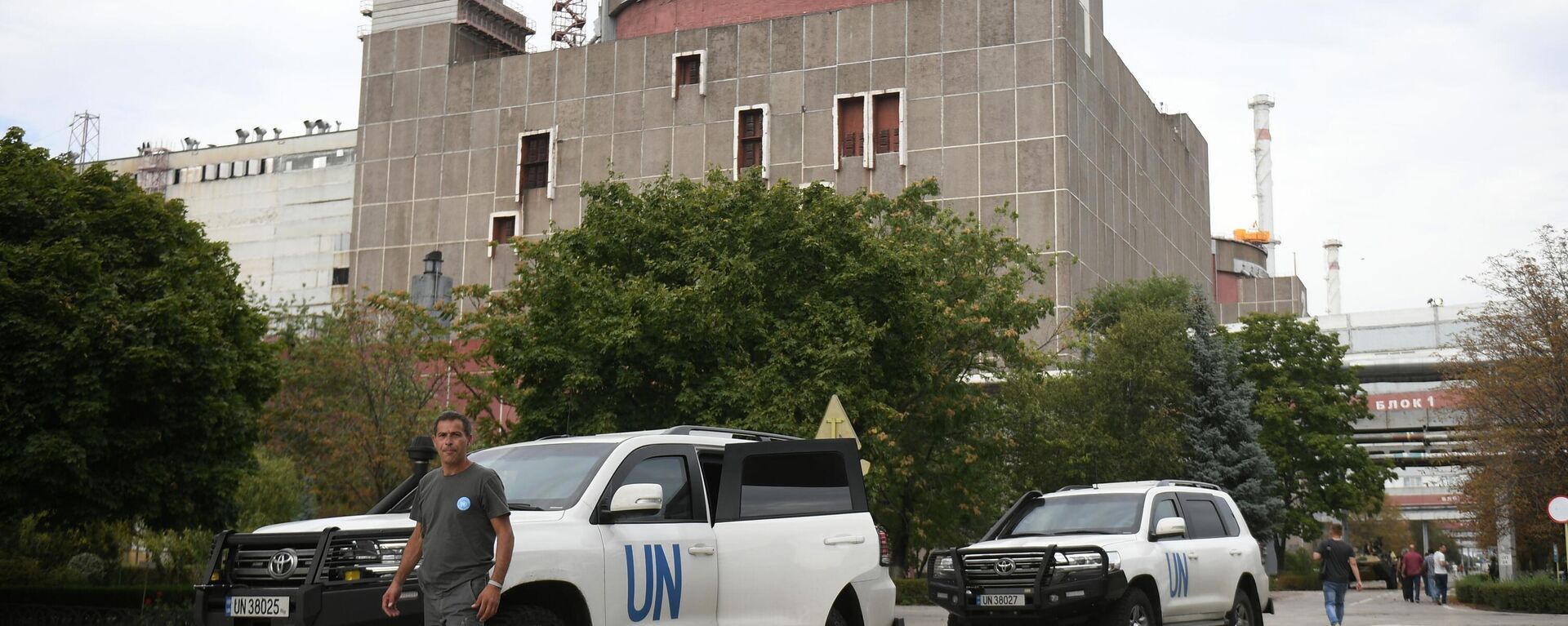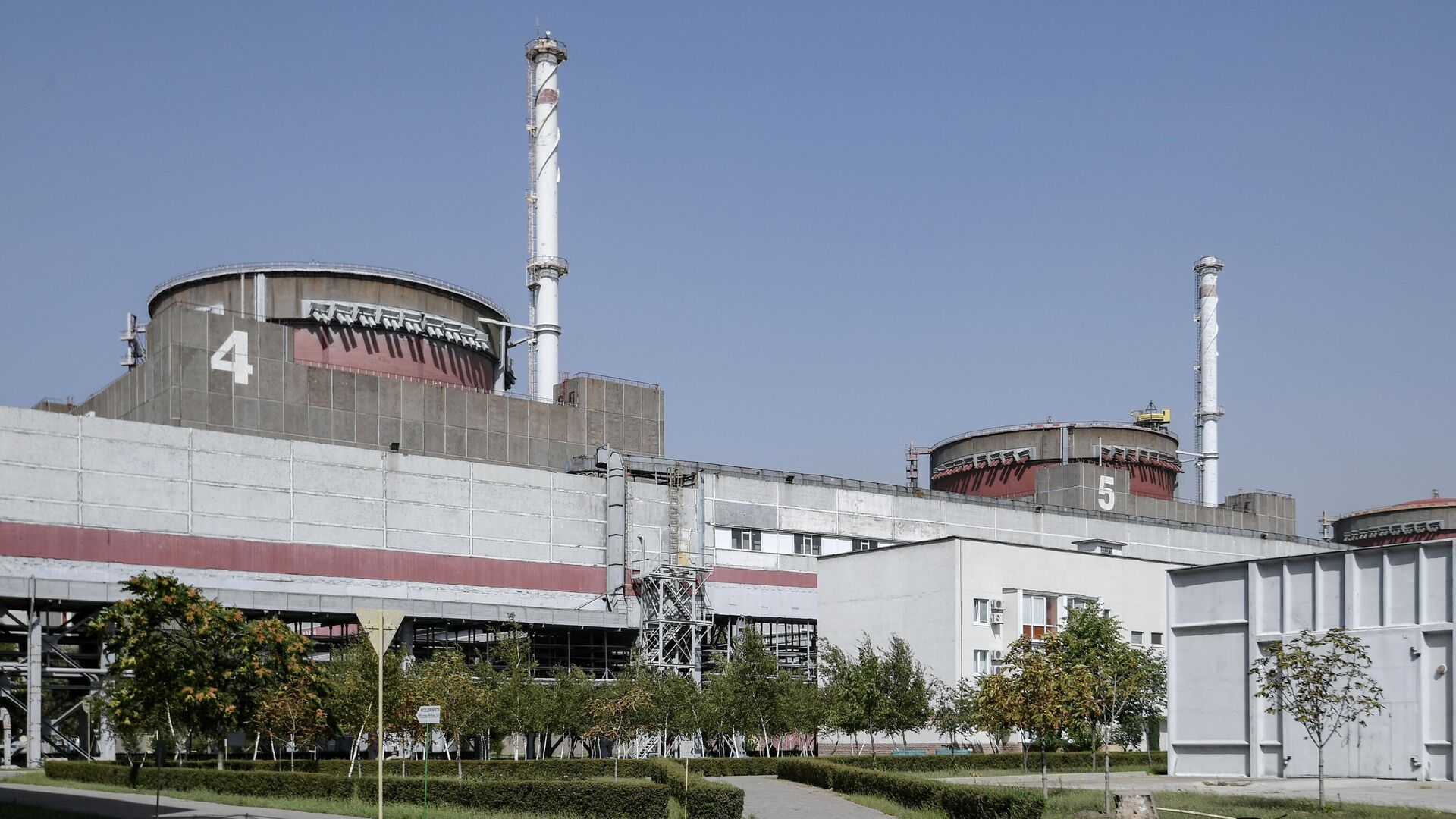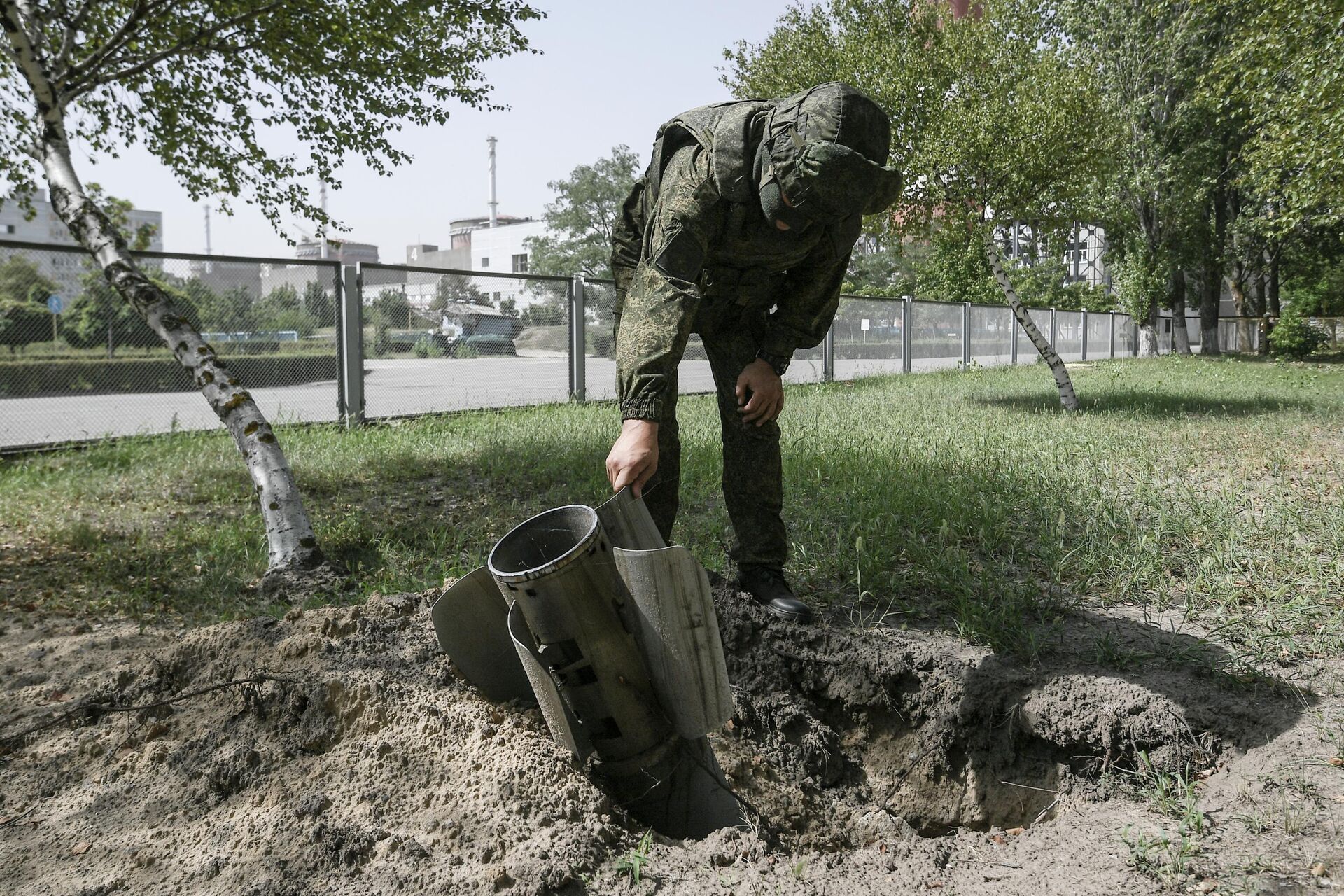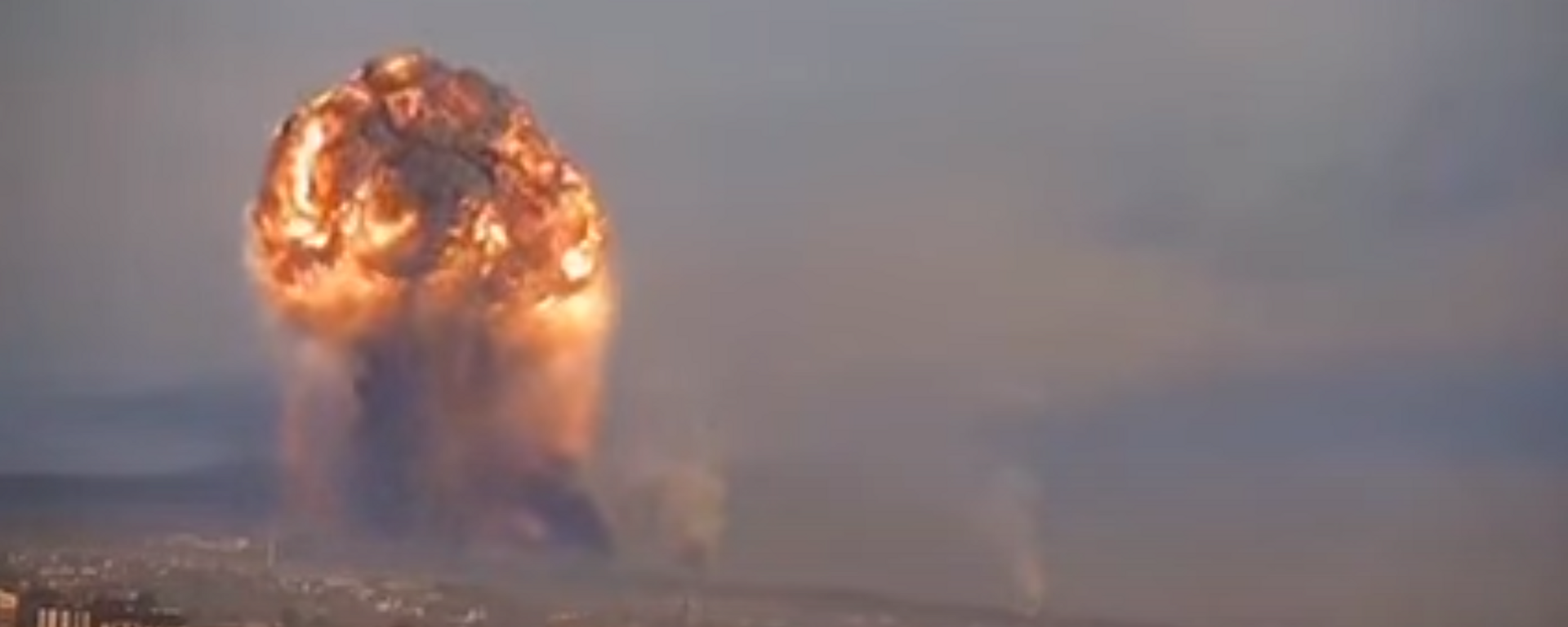https://sputnikglobe.com/20230531/ukrainian-shelling-could-turn-europe-into-uninhabitable-radioactive-ruin-heres-why-1110822308.html
Ukrainian Shelling of Zaporozhye NPP Creates Risk of 'Nuclear Bomb Scenario'
Ukrainian Shelling of Zaporozhye NPP Creates Risk of 'Nuclear Bomb Scenario'
Sputnik International
IAEA head Rafael Grossi has proposed a five-point plan to help ensure safety and security at the Zaporozhye Nuclear Power Plant. Nuclear expert Chris Busby says Grossi’s concerns about the plant’s safety are fully justified.
2023-05-31T16:36+0000
2023-05-31T16:36+0000
2023-07-31T17:01+0000
analysis
zaporozhye
russia
hiroshima
united nations security council
the united nations (un)
chernobyl
zaporozhye npp
fukushima
https://cdn1.img.sputnikglobe.com/img/07e6/08/1b/1100054229_0:160:3073:1888_1920x0_80_0_0_4d3a527f581b6e9fd5ec4cfa394e7572.jpg
In an address before the United Nations Security Council on Tuesday, Rafael Grossi outlined measures which should be taken to prevent a deadly incident at the ZNPP – key among them an immediate halt to attacks of any kind against the facility.Other necessary measures, he said, include a commitment that the plant won’t be used to store heavy weapons or launch attacks, the preservation of the safety of onsite backup cooling systems and offsite power connections, and assurances that no actions are taken which could undermine these principles.Grossi characterized the situation at the plant as "extremely fragile and dangerous," and urged for the measures to be implemented immediately. As usual, he did not attribute responsibility for the deterioration of the security situation around the plant, which has been controlled by Russia since March 2022, and regularly shelled by Ukrainian forces since then.Ukrainian Permanent Representative to the UN Serhiy Kislitsa disingenuously assured the Security Council that Kiev had "never resorted and will never resort to any steps that could lead to a nuclear incident" at the ZNPP.Russian Permanent Representative Vassily Nebenzya told the body that the Russian side is already in compliance with Grossi’s recommendations, having implemented them independently "in accordance with decisions taken at the national level."'Absolutely Right to Be Freaking Out'The IAEA chief "is fully aware" of the dangers associated with the deteriorating security situation at the ZNPP, is "understandably panicking," and is "absolutely right to be freaking out," says Chris Busby, a veteran chemical physicist with decades of experience studying the health effects of internal ionizing radiation, who currently serves as the scientific secretary of the European Committee on Radiation Risk.Speaking to Sputnik and commenting on Grossi’s recommendations, Dr. Busby said that the "common sense" proposals are really just "a list of things that everyone must have been aware of from the very beginning" of the Ukraine crisis, but that regular shelling and missile attacks, and the possibility of the ZNPP becoming a direct battleground in a possible Ukrainian counteroffensive, makes them all the more pressing.'Controlled Nuclear Bomb'"Nuclear energy is a very dangerous technology," the scientist emphasized, pointing out that at their core, nuclear power plants are "effectively a controlled nuclear bomb.""The problem is, that if the cooling system is damaged, so that the water cannot circulate, the neutrons heat up the uranium fuel very quickly, and there is a meltdown. When the uranium fuel rods melt, they fall to the bottom of the reactor pressure vessel, and at that point, the neutron density increases, a chain reaction occurs and the reactor turns into a bomb and explodes, as happened at Fukushima, and as happened at Chernobyl. Other bad things can also happen: the enormous increase in temperature and radiation can produce hydrogen and this can also explode," he added.The same thing could happen to spent fuel, the scientist said, with these elements continuing to contain all of the fission products of uranium, and will continue to be radioactive for thousands of years.The scientist estimates that there are about 20,000 tons' worth of spent fuel rods at the ZPP, plus 60 tons in each of its reactors.“If one component goes up, they all will, because the radiation levels will, just as with Fukushima and Chernobyl, prevent anyone getting near the plant," he stressed, noting that this includes even robots – whose electronic circuits would be "wiped out" by the radiation.The radioactive fallout from a disaster at the ZNPP would "make Europe pretty much uninhabitable," in Dr. Busby's estimation, leading to skyrocketing rates of premature deaths from cancers, fertility loss, congenital defects and a host of other illnesses. According to the scientist, the Ukrainian forces shelling the plant probably don’t "have the faintest idea" of what they're doing, and "what Grossi has termed 'the rolling of the dice.'"What Can Be Done?Dr. Busby believes the best thing that can be done to ensure the ZNPP's safety is putting the Ukraine crisis to bed. "Failing that, the integrity of the [plant's] lake must be ensured," which means protecting the dam feeding it.The Zaporozhye Nuclear Power Plant is the largest nuclear power plant in Europe, with its six reactors capable of generating up to six gigawatts of power – enough to power over 1.8 million average European homes.
https://sputnikglobe.com/20220906/iaeas-report-on-zaporozhye-npp-mission-released-1100449583.html
https://sputnikglobe.com/20230519/ukraines-depleted-uranium-blast-europe-on-brink-of-environmental-disaster-1110462939.html
https://sputnikglobe.com/20230426/will-zelensky-cause-chernobyl-20-1109853554.html
zaporozhye
russia
hiroshima
fukushima
Sputnik International
feedback@sputniknews.com
+74956456601
MIA „Rossiya Segodnya“
2023
News
en_EN
Sputnik International
feedback@sputniknews.com
+74956456601
MIA „Rossiya Segodnya“
Sputnik International
feedback@sputniknews.com
+74956456601
MIA „Rossiya Segodnya“
chris busby, zaporozhye nuclear power plant, radiation, uranium, united nations, international atomic energy agency, recommendations, analysis, shelling, danger, threat, concerns, ukraine npp, nuclear plant in zaporozhye, nuclear plant shelled, nuclear plant attack
chris busby, zaporozhye nuclear power plant, radiation, uranium, united nations, international atomic energy agency, recommendations, analysis, shelling, danger, threat, concerns, ukraine npp, nuclear plant in zaporozhye, nuclear plant shelled, nuclear plant attack
Ukrainian Shelling of Zaporozhye NPP Creates Risk of 'Nuclear Bomb Scenario'
16:36 GMT 31.05.2023 (Updated: 17:01 GMT 31.07.2023) International Atomic Energy Agency chief Rafael Grossi has proposed a five-point plan to help ensure safety and security at the Zaporozhye Nuclear Power Plant. Renowned nuclear expert Chris Busby says Grossi’s concerns about the plant’s safety are fully justified, but that much more needs to be done.
In an address before the United Nations Security Council on Tuesday,
Rafael Grossi outlined measures which should be taken to prevent a deadly incident at the ZNPP – key among them an immediate halt to attacks of any kind against the facility.
Other necessary measures, he said, include a commitment that the plant won’t be used to store heavy weapons or launch attacks, the preservation of the safety of onsite backup cooling systems and offsite power connections, and assurances that no actions are taken which could undermine these principles.
Grossi characterized the situation at the plant as
"extremely fragile and dangerous," and urged for the measures to be implemented immediately. As usual, he did not attribute responsibility for the deterioration of the security situation around the plant, which has been controlled by Russia since March 2022, and
regularly shelled by Ukrainian forces since then.
Ukrainian Permanent Representative to the UN Serhiy Kislitsa disingenuously assured the Security Council that Kiev had "never resorted and will never resort to any steps that could lead to a nuclear incident" at the ZNPP.
Russian Permanent Representative Vassily Nebenzya told the body that the Russian side is already in compliance with Grossi’s recommendations, having implemented them independently "in accordance with decisions taken at the national level."
"Thus, there have never been any attacks from the territory of the ZNPP [by Russia]. Heavy weapons and ammunition have never been deployed at the plant. There are no military personnel at the Zaporozhye NPP which could be used to carry out attacks from the territory of the plant," Nebenzya said. Furthermore, he said, Moscow has taken "concrete steps" to protect the plant’s most sensitive structures and systems from sabotage and attack.
'Absolutely Right to Be Freaking Out'
The IAEA chief "is fully aware" of the dangers associated with the deteriorating security situation at the ZNPP, is "understandably panicking," and is "absolutely right to be freaking out," says Chris Busby, a veteran chemical physicist with decades of experience studying the health effects of internal ionizing radiation, who currently serves as the scientific secretary of the European Committee on Radiation Risk.
Speaking to Sputnik and commenting on Grossi’s recommendations, Dr. Busby said that the "common sense" proposals are really just "a list of things that everyone must have been aware of from the very beginning" of the Ukraine crisis, but that regular shelling and missile attacks, and the possibility of the ZNPP becoming a direct battleground in a possible Ukrainian counteroffensive, makes them all the more pressing.
"The Ukrainian ambassador to the United Nations, Mr. Kislitsa, apparently stated [that] 'we have never resorted and never will resort to steps that could lead to a nuclear incident.' Well, one problem I have with this is the pronoun 'We.' I am a scientist, not a political commentator, but it seems to me that there are many different groups fighting in this war, and all kinds of attacks occur in all kinds of places, people are assassinated, bridges are blown up, undersea pipelines are destroyed, and no one seems to blame the Ukrainian government. Maybe there are a lot of independent nationalist groups (Terrorists? Assassins?) who take matters into their own hands and devise independent strategies," Busby quipped.

6 September 2022, 14:22 GMT
'Controlled Nuclear Bomb'
"Nuclear energy is a very dangerous technology," the scientist emphasized, pointing out that at their core, nuclear power plants are "effectively a controlled nuclear bomb."
"The enormous energy released when a nuclear bomb is detonated—and we have seen the pictures of Hiroshima—is released all at once. Bang! But the chain reaction in uranium that levelled Hiroshima and killed all those people is the same neutron-controlled reaction that occurs in nuclear power plants, except that the reaction is controlled with materials that moderate the rate of production of neutrons, so that the uranium fuel remains at a temperature where it can turn cooling water into steam which in turn turns the turbines that make the electricity," Dr. Busby explained.
"The problem is, that if the cooling system is damaged, so that the water cannot circulate, the neutrons heat up the uranium fuel very quickly, and there is a meltdown. When the uranium fuel rods melt, they fall to the bottom of the reactor pressure vessel, and at that point, the neutron density increases, a chain reaction occurs and the reactor turns into a bomb and explodes, as happened at Fukushima, and as happened at Chernobyl. Other bad things can also happen: the enormous increase in temperature and radiation can produce hydrogen and this can also explode," he added.
The same thing could happen to spent fuel, the scientist said, with these elements continuing to contain all of the fission products of uranium, and will continue to be radioactive for thousands of years.
"These spent fuel rods are still very hot, and have to be kept apart and cooled, just as in the reactor. So, they are stored in spent fuel ponds and cooled with water, or else dry stores and cooled with air and heat exchangers. If the cooling to the spent fuel fails, you have another nuclear bomb scenario," Busby said.
The scientist estimates that there are about 20,000 tons' worth of spent fuel rods at the ZPP, plus 60 tons in each of its reactors.
“If one component goes up, they all will, because the radiation levels will, just as with Fukushima and Chernobyl, prevent anyone getting near the plant," he stressed, noting that this includes even robots – whose electronic circuits would be "wiped out" by the radiation.
The radioactive fallout from a disaster at the ZNPP would "make Europe pretty much uninhabitable," in Dr. Busby's estimation, leading to skyrocketing rates of premature deaths from cancers, fertility loss, congenital defects and a host of other illnesses. According to the scientist, the Ukrainian forces shelling the plant probably don’t "have the faintest idea" of what they're doing, and "what Grossi has termed 'the rolling of the dice.'"
Dr. Busby believes the best thing that can be done to ensure the ZNPP's safety is putting the Ukraine crisis to bed. "Failing that, the integrity of the [plant's] lake must be ensured," which means protecting the dam feeding it.
"It is water from the lake that is at the base of the cooling system. A buffer zone capable of protecting the power station from attacks should be organized, and this must constitute a no-fly area for missile attacks or personnel incursions. What else? Prayer. It is as bad as you can imagine," Busby summed up.
The Zaporozhye Nuclear Power Plant is the largest nuclear power plant in Europe, with its six reactors capable of generating up to six gigawatts of power – enough to power over 1.8 million average European homes.







